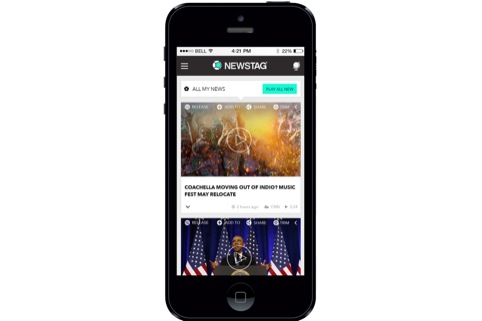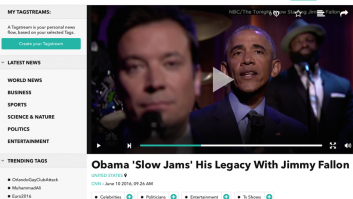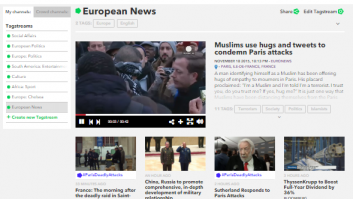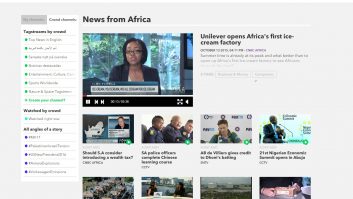
There was good news for Newstag last week, when the Swedish crowd-curated video news service announced it had secured $1.3 million of seed funding. A group of private and institutional investors have backed the start-up company to develop its social media news-sharing approach. In addition to the funding Newstag has also been awarded a Swedish innovation grant of $150,000.
Drowning in content
“The whole concept is built on a problem in the market – we are drowning in content,” explains CEO Henrik Eklund, who founded Newstag, together with his wife Camilla Dahlin-Andersson. “One hundred hours of video per minute is uploaded to YouTube – this has an impact on the ecosystem and me as a user,” he continued.
Newstag wants to change this, allowing individuals to personalise and coordinate content. It aims to bring together video news from content producers around the world, including Reuters and AP – where Eklund formerly held the role of director of digital partnerships and distribution, EMEA – as well as brands and NGOs. “The service is that you tag news you find interesting, brands, NGOs, users you want to follow,” explains Eklund. “It’s the tagging aspect that we want to transport.” Users will be able to create personalised video newscasts on their smartphones to create customised feeds which they can share with contacts through social networks.
Consumer power
This puts the power firmly in the hands – or at the fingertips – of the consumer, an approach which is clearly at the forefront of Eklund and Dahlin-Andersson’s work. “You have to start with the consumer somewhere. We believe there is more depth to the consumer than just a ‘selfie.’ You want to express something more –people are more complex and need to be able to show more than one side of themselves. People want to make a difference. People care, and it’s a lie that young people don’t care about news.”
The notion of caring is reflected in the couple’s business approach. Value will be created through advertising and revenues will be distributed within the system. Once they’ve reached a certain level, “users can use social currency to re-distribute money,” and either spend their income or donate money to causes and projects they find relevant.
Newstag will be based around the consumer, so once a user has logged in, the site will be updated with news based on personal preferences, from both local and international providers. Users can zoom in on areas across the world and see them populated with different news stories. Pieces of interest can then be shared with friends and contacts, and, as often with shared content, ads will be attached.
However, it is in this respect that Newstag differs from other sites, placing choice again with the user, who can select which ads to attach to the piece. The idea being that the user has control over which brand the receiver will see attached to the news item – something of personal interest to them – and the company behind the brand will be able to micro-target the consumer, providing, says Eklund, “every marketer’s dream.”
Eklund also reveals that the couple have been in conversation with brands with the offer that “a brand can own a tag: this is a new way of owning content.” This is designed as an alternative to traditional channels of communication between brand and consumer. “Traditional target group thinking just doesn’t deliver,” says Eklund. “You are so distanced from their clients that brands don’t have a clue about how to communicate. We get every user to choose their own relevant tag and brand. The consumer chooses.”
Solving sustainability issues
By creating and maintaining this close relationship between the consumer, brands and NGOs, Newstag aims to address and solve the issue of sustainability, with its sights set for expansion soon after launch. “The idea is to collect content and angles from as many organisations as possible. We will launch after the summer and aim to have a big company from each country and continent.”
The concept of collating multiple angles and utilising diverse sources is reflected in the company logo, the dodecahedron, with its 12 different sides and 12 different colours. Eklund’s thoughtful and thought-provoking approach is perhaps typical of design-focussed Sweden: “Everything with the new design has a traceable idea. With artists and designers you can always trace their ideas. Without that, it’s just risk-taking.”
Having spent over 20,000 hours “developing tools to do what we want to do” the obvious effort the duo have invested shows they are no risk-takers. Newstag’s website promises ‘ a seriously playful media platform’ and even the company’s tagline ‘you’re it’ alludes to the fun of the playground game. Backed by an experienced and dedicated team, with an ethos of putting the customer in charge, means the concept will surely catch on.






